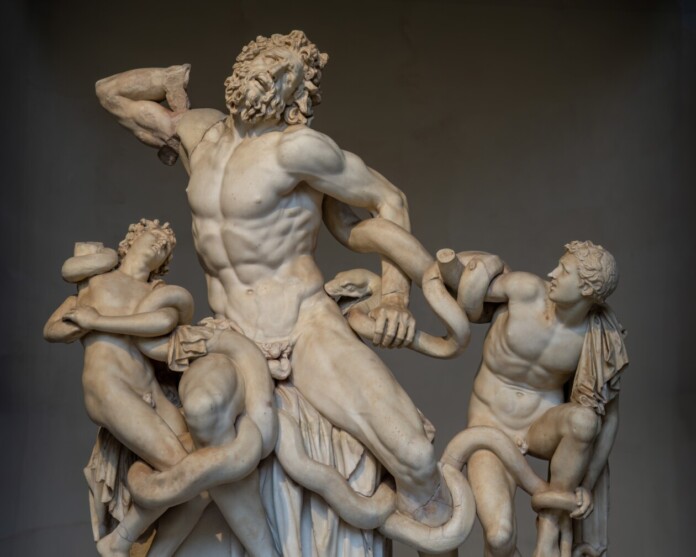Classical art, a cornerstone of Western artistic tradition, flourished during antiquity in Greece and Rome, spanning from approximately the 5th century BCE to the 5th century CE. This period witnessed a remarkable confluence of artistic and cultural achievements, leaving an enduring legacy that continues to inspire and captivate audiences today.
This comprehensive exploration of Classical art will delve into its various facets, including its historical context, key characteristics, significant artistic movements, and influential figures. We will examine the evolution of Classical art, from its early Archaic period to the Hellenistic era, and explore its impact on subsequent artistic developments.
Historical Context
The rise of Classical art was inextricably linked to the flourishing civilizations of ancient Greece and Rome. In Greece, the polis, or city-state, emerged as the fundamental unit of political and cultural organization. The Greeks developed a vibrant intellectual and artistic culture, characterized by a strong emphasis on humanism, reason, and beauty.
Rome, initially a small agrarian community, expanded its territory through conquest and assimilation. The Romans adopted many aspects of Greek culture, including their art and architecture. However, Roman art also developed its own distinctive style, reflecting the grandeur and power of the empire.
Key Characteristics of Classical Art
Classical art is defined by several key characteristics, including:
- Naturalism: Classical artists sought to depict the human form and natural world with a high degree of realism and accuracy. They studied anatomy and perspective to create lifelike representations.
- Idealism: Classical art often idealized the human form, portraying figures with perfect proportions and symmetry. This idealization reflected the Greeks’ belief in the beauty and harmony of the human body.
- Balance and Harmony: Classical artists strove to create compositions that were balanced and harmonious, with all elements working together to create a sense of unity.
- Clarity and Simplicity: Classical art is characterized by clarity and simplicity of form. Artists avoided excessive ornamentation or detail, focusing instead on the essential qualities of their subjects.
- Emphasis on the Human Figure: The human figure was a central theme in Classical art, appearing in a wide variety of contexts, from mythological scenes to everyday life.
Significant Artistic Movements
Classical art encompasses several distinct artistic movements, each with its own unique characteristics:
- Archaic Period (c. 700-480 BCE): The Archaic period marked the early development of Classical art, characterized by a rigid and stylized approach to the human form. Sculptures were often idealized and frontal, with limited movement.
- Severe Style (c. 480-450 BCE): The Severe Style emerged in the aftermath of the Persian Wars, characterized by a more restrained and austere approach to the human form. Sculptures were more naturalistic and dynamic, with a focus on capturing the underlying structure of the body.
- Early Classical (c. 450-400 BCE): The Early Classical period witnessed a peak in the development of Classical art, characterized by a harmonious blend of naturalism and idealism. Sculptures were exquisitely balanced and proportioned, with a focus on capturing the beauty and grace of the human form.
- High Classical (c. 400-323 BCE): The High Classical period is considered the golden age of Classical art, characterized by a culmination of its key principles. Sculptures were incredibly lifelike and expressive, capturing the full range of human emotion.
- Hellenistic Period (c. 323-31 BCE): The Hellenistic period marked a decline in Classical art, characterized by a more dramatic and expressive style. Sculptures often depicted exaggerated emotions and movement, reflecting the turbulent political and social climate of the time.
Influential Figures
Classical art was shaped by the contributions of numerous talented artists and sculptors. Some of the most influential figures include:
- Phidias: A renowned Athenian sculptor of the Classical period, Phidias created some of the most iconic works of Greek art, including the colossal statue of Athena Parthenos in the Parthenon.
- Praxiteles: A sculptor of the Classical and Hellenistic periods, Praxiteles is known for his idealized and sensuous depictions of the female form, such as the Aphrodite of Knidos.
- Scopas: A sculptor of the Hellenistic period, Scopas is renowned for his dramatic and expressive works, such as the Meleager and the Furies.
- Polyclitus: A sculptor of the Classical period, Polyclitus is known for his innovative approach to the human form, developing a system of ideal proportions known as the “canon.”
- Lysippus: A sculptor of the Hellenistic period, Lysippus is renowned for his elongated and athletic depictions of the male form, such as the Apoxyomenos.
Impact on Subsequent Artistic Developments
Classical art has had a profound and enduring impact on subsequent artistic developments. Its principles of naturalism, idealism, balance, and harmony have been embraced by artists throughout history. The Renaissance, for example, was a period of renewed interest in Classical art, leading to a revival of its styles and techniques.
Classical art continues to inspire and captivate audiences today. Its legacy can be seen in the work of contemporary artists, who often draw upon its forms, themes, and techniques. By studying and appreciating Classical art, we can gain a deeper understanding of the origins of Western artistic tradition and the enduring power of human creativity.
